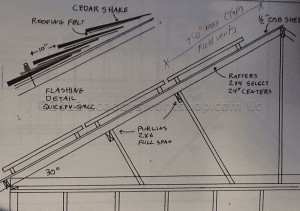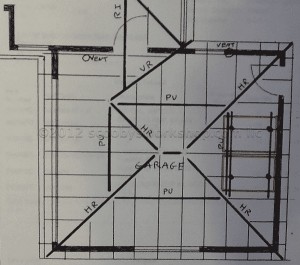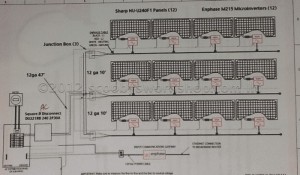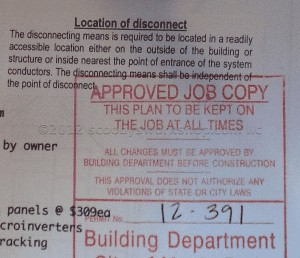You CAN make a difference! I have never written my congressman, nor my senators, nor the president. I have found it much more effective and less frustrating to ACT rather than complain and this goes for all aspects of my life. Act locally! You can make an immediate positive difference and as a side benefit, set an example for others. I use this philosophy in all aspects of my life, including fitness. Rather than wasting my time complaining about scam websites hawking expensive, useless programs I have acted and provided my own free fitness information.
The subject is earth day though. What can one tiny person do when it comes to global energy consumption and climate change? Complain? Yell at your congressman on Earth Day and then forget about it for the other 364 days? Not very effective. I have acted and made a difference in my own little way. Decades ago I gave up commuting by car to save energy. I have either arranged my life so I could bike commute or work from home. Bike commuting to work is an awesome way to combine improving your physique and health with improving the environment! Commuting is a huge source of energy consumption and mine has been zero for the last decade. Does that make a dent in the nations energy consumption, certainly not. What it does do is starts people thinking, at parties the subject of work usually comes up and I always mention my commute (or lack of it) along with what I do and it gets people thinking. “Gee, wouldn’t it be nice to be able to bike or jog to work”. It gets them thinking that it is a possibility. If enough people start doing it, it will cascade.
So for this Earth Day we decided to take the next step, solar power. Solar panels have come down drastically in price, so drastically in fact that the installation price is often more than the materials price making it perfect for a DIY. Before we talk about price though, lets talk about this from a green point of view. Those solar panels take a lot of energy to make but from what I have read, it takes a solar panel about two years for energy break even – that is, to generate enough electricity to make another panel. So far, so good. The panels are guaranteed to put out at least 80% of their rated output for 25 years so thats at least 24 years of pollution free energy. What about the environmental damage done in mining and building the panels? Here is my thought. Bad as making semiconductors is for the environment, oil is worse. Tankers sinking and polluting coastlines, wars fought for oil, combustion pollutants – solar panels cant be as bad as the environmental damage done by producing gasoline.
Now lets talk economics, more good news! Getting a solar PV array installed professionally has a payback period of over a decade, which isnt bad, but doing the work myself I can get a 5 year payback! That’s without even taking tax credits and incentives into account!!! How is this possible? Because I work at home and use several high powered computers, I’m in the third penalty tier for electric rates so most of my energy costs 33 cents per kilowatt-hour. I have room for twelve 240 watt panels on my roof, here are the numbers:
- number panels = 12
- max watts = 2880
- yearly energy production = 5600kwh
- approximate energy savings = $1840 (5600kwh x .33/kwh)
- approximate system cost $8500 ($2.95/kwh)
- $4800 ($400×12) 12 sharp 240 watt panels
- $1920 ($160×12) 12 Enphase micro-inverters
- $1000 racking
- $4.22 permits (basically free because city encourages solar)
- $800 wiring, conduit, panels, disconnect, etc
- payback period = 5 years
Just think, after 5 years I get free electricity! I could buy an electric vehicle and the drive for free! Can you install solar panels yourself? If you feel comfortable building a shed, replacing an electrical outlet, and could install a TV antenna mast on your roof then yes, you can install solar panels BUT you gotta do your homework! Step one is to go visit your cities building inspections department because they will certainly have a pre-printed document on what you need to get a solar PV installation permit. Most people have this irrational fear of building inspectors but usually these “horror stories” of how difficult permits and inspections can be are spread by fly-by-night handymen who don’t know what they are doing. The building inspectors are your friend! Most of them are highly experienced tradesman who will gladly share a wealth of information with you, all you have to do is ask. There are a lot of things wrong with America but one perfect example of how right things are the building codes and construction permit process. When earthquakes hit, our buildings remain standing. When hurricanes hit, our homes don’t blow off their foundations nor do the roofs blow off. Home fires are virtually unknown today when a century ago they were commonplace. Sewer problems a century ago had everyone holding their noses, now its almost never a problem. Why? Because building codes protect us. I have built two of my houses by myself and found that virtually every building code that I needed to satisfy had a very good reason – codes are completely free of idiotic politics. If you don’t understand the reason for something in the code then ask one of the inspectors and they will be glad to tell you! At first when you see the list of things you need for a solar permit you might be intimidated but they are all required for your safety and they are not that tough. They are there to keep you from caving in your roof, causing leaks in your roof, to keep the solar panels from flying off in the wind, or to keep you from electrocuting somebody. It took me 8 hours of work time to draw up my permit package and then when submitted it took only 5 days to get my permit. Here is what my permit application package looked like:
- roof cross section showing structure and flashing
- roof plans showing panel locations
- load calculations
- electrical plans
- specs for inverter and solar panels
The majority of my permit package installation time was spent measuring and drawing the house to accurate show the location of structural members and decide how and where to place the panels.
Don’t be too intimidated by the load calculations, they look difficult but they are easy. People who sell solar racking like Unirac have easy to use online configurators that tell you exactly what racking components you need and they spit out the three pages of load calculations that are needed for the permits!
Similarly, don’t be too intimidated by the electrical plan. I used the electrical plan in the micro-inverter specification and photoshopped it to show my installation. All I had to do was add the correct number of panels, add a disconnect box, and show the cabling. Took me less than an hour to do this drawing.
Less than five days later I had my permit! I can get my order placed for my equipment in time for Earth Day 2012 which is April 22!




